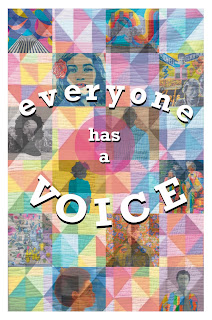Layout of information.
 |
| Why does art matter? |
| A broad overview of color and form in the paintings of Matisse. |
I chose Easel.ly for my Infographic. I looked at each site and contacted a few to ask whether they were compatible with iPad. They all said not. (Except one who didn’t answer me.) There were several places online I found people who had worked in Easelly on their iPad so I gave that one a go. I sort of figured that if I liked it the cost is only $2 for a student subscription. I did not like it; the free version, at least. Also at that point I was too annoyed to want to give them my $2 and then remember later to cancel. Blargh. I got through the layout and lines drawn and became fed up and bailed. I took a screen shot of it and finished it using the markup type tool in the iPad’s Photo app. No joke. Easelly was pretty finicky and every little tiny movement of my pencil made the objects object. (Haha.) If I was going to be making Infographics on a regular basis I’d really have to be able to utilize my iPad to make them. Before giving up on Easelly or infographics in general I’d give the pro tools for two bux a try. Overall I preferred working with the Adobe product (InDesign) but that’s not available for use on the iPad (yet?). Having full use of the product’s tools made a big diff!
Time + Category = My chosen LATCH elements. I organized my Infographic utilizing just the paintings of Henri Matisse. So in that way its a categorical sorting, but I also put the paintings on a timeline from near the beginning of Matisse’s painting career and then on toward the end. This serves to illuminate patterns and evolution in his palette as well as the way he composed elements on the canvas. If I coulda I woulda put, like 50 of his works on the poster to really zoom out and look at the broader picture of his work. That might work nicely on an 18 x 24” poster and would be a fantastic jumping off point for some color and palette explorations!

It seems like everyone’s got “so much things to say” (to quote Ms. Lauryn Hill) and parsing out who is worth listening to is a full time job. Enter David McCandless! This fella is scraping every corner of the internet to shed light onto all sorts of current events and issues.
This 👆 Infographic is of particular interest to me because I’m rather averse to medication myself and relish the thought of supporting this human-suit’s health and well being by natural means. The interactivity and embedded sources are a bonus for sure! I think it would have been amusing and encouraging if he had added exercise, sleep and certain dietary options as well. Although, to be fair, it is already quite populated with bubbles! The efficacy of the visual lies in the variety of information as well as methods of communication. There are so many things happening at once, and this can be tremendously frustrating to any person seeking information on the subject. What is most important? What is most effective? What can a supplement be used for? Which ones are natural?
The bubble size shows how significant/popular the supplement is and the color/position show how effective it is. Furthermore, there is a notation under each supplement title stating what it is used for. Magnificent.
Visual culture saturates our world. It is simultaneously problematic and self-solving.
- What do you think of the quote from Hans Rosling "Let the dataset change your mindset."?( 12:18) Do you think data is powerful enough to change ones behavior? YES I DO. Data is the quantifiable foundation upon which to build a case for-or-against any given thesis. If the numbers argue against your belief then it is dogma or emotion interfering with facts and evidence. So be it. You’ve been told.
- "Design is about solving visual problems with elegant solutions and information design is about solving information problems" What are your thoughts about how this can help communication with issue with trust and reliabilty?(16:43) THINGS THAT LOOK GOOD ARE MORE APPEALING AND THEREFORE MORE EFFECTIVE. People are floundering out in the world with the glut of ill-gotten information hanging off their metaphorical bodies in a type of bad-data-morbid-obesity. Let’s all shed those extra erroneous data LBs and be thoughtful in our approach to growing in knowledge, information and maybe even wisdom!
- How does this "data visualization" talk tie into what we have been learning about visual culture and media? PEOPLE WANT TO SEE STUFF. ALSO THEY NEED (GOOD, ACCURATE) INFORMATION. When accurate information is presented well by reliable sources it can do much good in the world.
THANK YOU.




Comments
Post a Comment